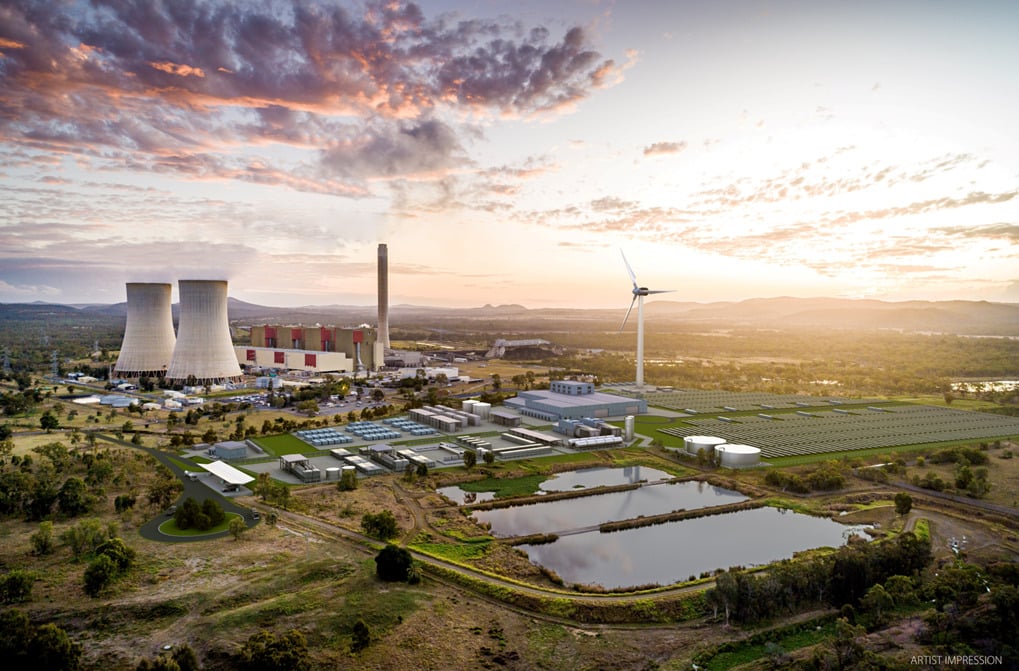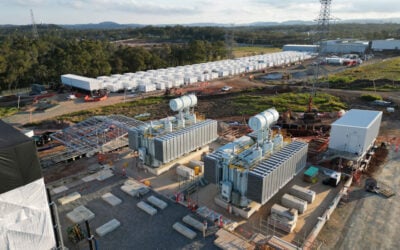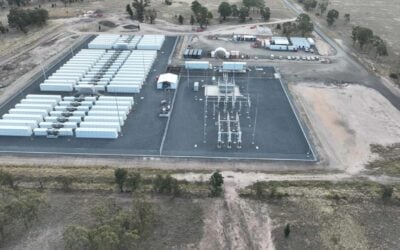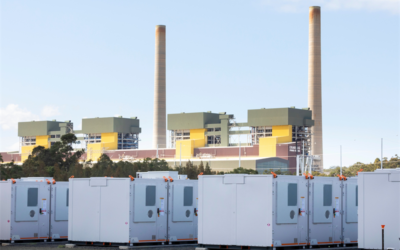
The government of Queensland has provided details of its Stanwell Clean Energy Hub multi-phase development, which will see a coal power plant site transformed in the coming decade.
The Australian state’s energy sector is in public ownership, including utility Stanwell Corporation, which owns and operates the 1,460MW coal-fired Stanwell Power Station among its portfolio. Starting with a technology demonstration and training centre, the site will be fully repurposed for low carbon energy by a 2032-2033 timeline.
“Because Queenslanders kept their energy network in public hands, they have unprecedented control over the destiny of their energy system in its transition to 70% renewable energy by 2032,” state minister for energy, renewables and hydrogen Mick de Brenni said.
“While other states are scrambling to get out of coal-fired power, or even prop it up for longer, it’s Queensland who is now leading the nation’s orderly climate and energy transition.”
Try Premium for just $1
- Full premium access for the first month at only $1
- Converts to an annual rate after 30 days unless cancelled
- Cancel anytime during the trial period
Premium Benefits
- Expert industry analysis and interviews
- Digital access to PV Tech Power journal
- Exclusive event discounts
Or get the full Premium subscription right away
Or continue reading this article for free
The renewable energy target de Brenni referred to was put in place by state premier Annastacia Palaszczuk last year, part of the AU$62 billion (US$39.96 billion) Queensland Energy and Jobs Plan which also commits to progressing a ‘Queensland SuperGrid’ buildout of transmission infrastructure, supporting pumped hydro energy storage (PHES) developments, and convert all the state’s coal-fired power plant sites to clean energy hubs by 2035.
Earlier this month, the state government said Queensland has reached 25% renewable energy, putting it on course to meet an interim 50% by 2030 target.
Iron flow battery units already onsite
Stanwell Corporation will build a test bed for technologies including solar, wind, hydrogen and battery energy storage at the site, expected to cost in excess of AU$100 million.
Called the Future Energy and Innovation Training Hub (FEITH), the government described it as a sandbox for testing and demonstration, as well as a training and reskilling hub for workers, including those currently working at and around the Stanwell coal power plant.
One piece of that sandbox’s suite of technologies is a flow battery demonstration project. The proprietary iron electrolyte chemistry flow battery technology developed by US company ESS Tech Inc (ESS Inc) will be tried out for its viability at providing storage at durations of 8-12 hours, as well as for its viability in being rolled out on a wider basis in the state.
The 1MW/10MWh flow battery system’s installation process has already begun, and the 20 containerised flow battery units it comprises have been delivered to site.
The project is being carried out by Energy Storage Industries Asia-Pacific (ESI), licensee of ESS Inc’s technology. In addition to the license to distribute the batteries, ESI and ESS Inc are also building a production plant in Queensland where the devices can be made for the local and Asia-Pacific markets.
Once commissioned, Stanwell Corporation will own the battery storage system, placed on a site adjacent to Stanwell Power Plant.
The state government had said a few weeks ago that it would be supporting an iron flow battery pilot, in addition to a pilot installation of a zinc-bromine flow battery made by Queensland-headquartered Redflow. However at that time, the government did not reveal any details of the projects, save that each of them would be receiving AU$12 million in funding.
Queensland is actually thought to hold about a third of the world’s extractable primary vanadium reserves, and with vanadium pentoxide being the most common electrolyte chemistry for flow batteries, the state could hold competitive advantages in that space. The decision to diversify into also supporting the two other flow battery types is an interesting one.
Also being installed is a 5MW hydrogen electrolyser from Australian company Hysata. Construction of shared common infrastructure and civil works for the Stanwell hub will start later this year.
While specifics of renewable generation resources for the site were not discussed, the government did note that the Stanwell site sits on land between two of Queensland’s 12 planned Renewable Energy Zone (REZ) developments.
Queensland and other states are building REZ facilities in strategic locations where mixed, multi-gigawatt solar PV and wind plants and storage can be put. The two that would be connected to Stanwell Clean Energy Hub are the Capricorn REZ and Calliope REZ, both of which could host approximately 1,900MW to 3,800MW of clean energy generation when complete.





